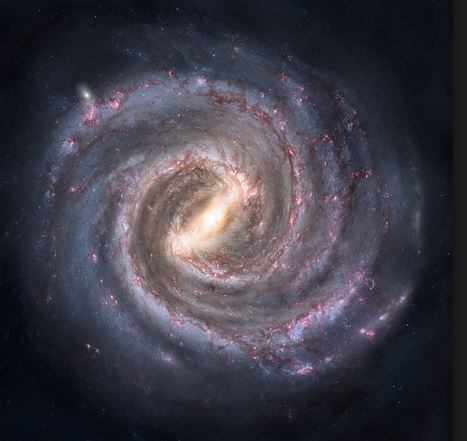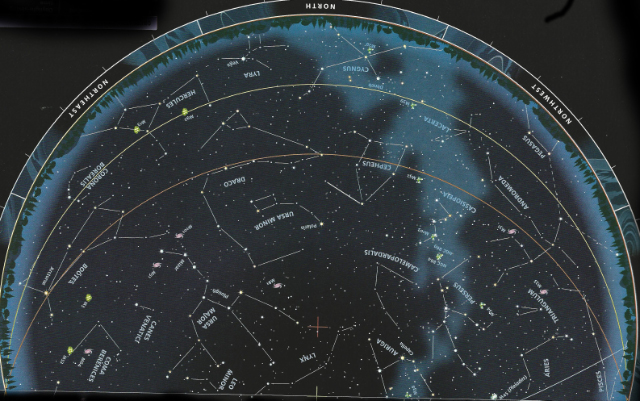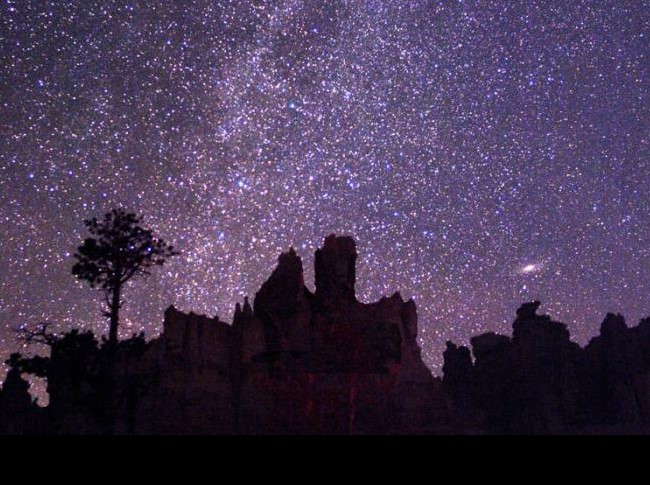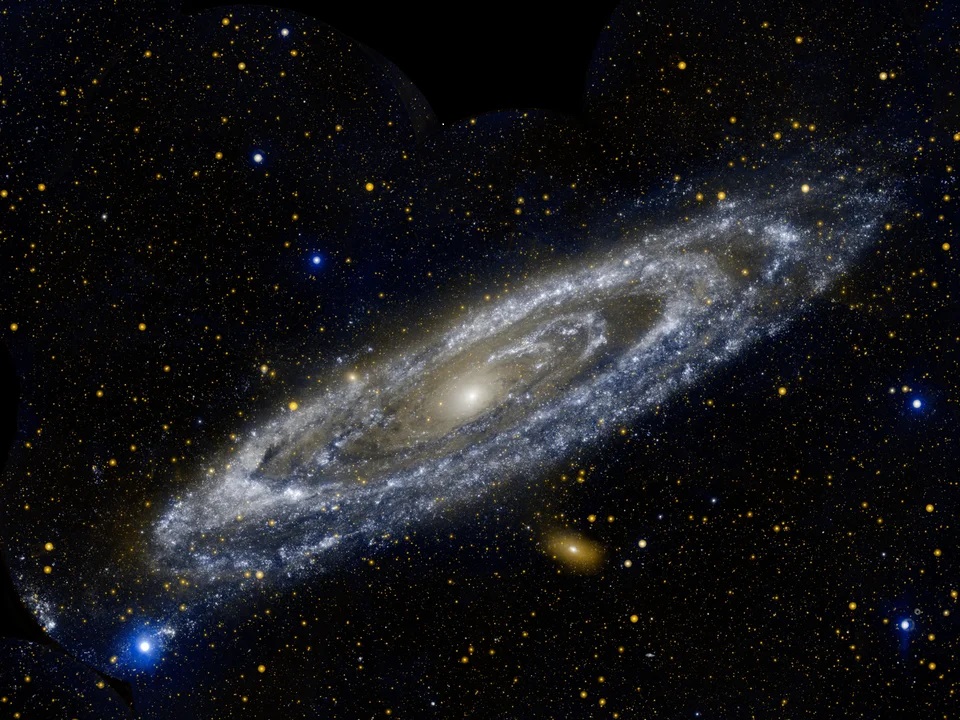The Universe consists of millions of galaxies, and each galaxy contains millions of stars. Stars are formed inside galaxies and cannot exist outside them.
Galaxies come in lots of different shapes and sizes but most have approximately rotational symmetry and are thickest in the middle. Our galaxy is what is called a spiral galaxy which is quite a common shape for a galaxy, and is about fifty thousand light years across. Here is an artist’s impression of it as seen from above, if above has any meaning in intergalactic space! I do not think anyone will ever be able to take a photograph of our galaxy from above, if only because the camera would need to be several thousand light years away from the Earth!
Our next nearest galaxy is about two and a quarter million light years away from ours!

The Solar System is near the outer tip of one of the spiral arms. Here is a very simple diagram showing our galaxy sideways on.
If we look from the Earth in any direction other than straight towards the centre of our galaxy we shall see individual stars, but if we look straight towards the centre of the galaxy we shall see so many stars that the whole sky is lit up by them, and we cannot separate one star from another: this is the Milky Way.


It stretches right across the middle of the Night Sky; it is not quite a regular shape because parts of it are blacked out by huge clouds of inter-stellar dust.
Sadly, in most parts of Britain there is too much light pollution for it to be seen properly.
For obvious reasons it was called the Milky Way a long time before we knew anything about galaxies, which is why today we call our galaxy the Milky Way Galaxy - Galaxy with a capital G because it is part of a Proper Name.
The Ancient Greek and Chinese and other astronomers had realised that the Milky Way was just a vast number of stars, but the first person to prove it was Galileo (1564 - 1642), who looked at it through his telescope.
The only (other) galaxy we can see from the Northern Hemisphere without a telescope is in Andromeda: we see it almost edge-on and to the naked eye it is little more than a blur, which is more or less how it is shown on the sky maps produced by the Ancient Astronomers, who of course had no idea what it was. In this photograph it is in the lower right.

This galaxy is about two and a quarter million light-years from ours - and remember our galaxy is only about fifty thousand light years across! Here it is again, but this time taken with a powerful telescope.
The stars in the picture are of course stars in our galaxy!

© Barry Gray December 2022